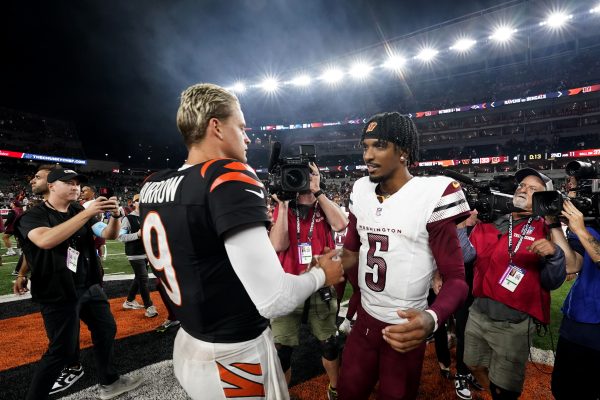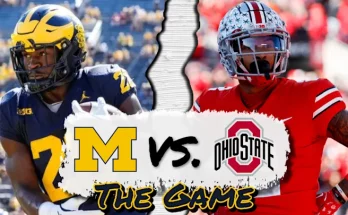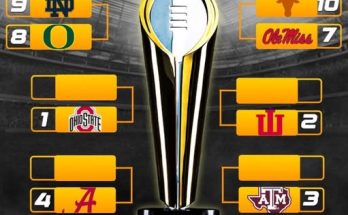Joe Burrow and Jayden Daniels, two of the most electrifying quarterbacks to ever don the purple and gold of Louisiana State University, have once again been thrust into the national spotlight—this time by Sports Illustrated. In a sweeping evaluation of the greatest college quarterbacks of all time, the venerable publication has named both former LSU stars in its Top 25 list, a nod to their transcendent play, championship pedigree, and profound impact on the college football landscape. While the debate surrounding the greatest college quarterbacks is always subject to change and perspective, the inclusion of both Burrow and Daniels is not only deserved but emblematic of the quarterback renaissance that has occurred in Baton Rouge over the past half-decade.
Joe Burrow’s legacy at LSU is nothing short of mythical. The Athens, Ohio, native arrived at LSU as a graduate transfer from Ohio State and proceeded to author what many believe is the greatest single season ever by a college quarterback. During the 2019 campaign, Burrow led the Tigers to a 15-0 record and a national championship while putting up video-game numbers. He threw for 5,671 yards, 60 touchdowns, and just six interceptions, winning the Heisman Trophy by the largest margin in history at that time. His calm demeanor, elite accuracy, decision-making under pressure, and competitive fire helped turn LSU into a modern offensive juggernaut under then-offensive coordinator Joe Brady. Burrow didn’t just elevate LSU—he altered the SEC’s offensive philosophy, breaking the mold of conservative, run-heavy game plans and ushering in a new era of spread offenses that relied heavily on elite quarterback play.
Jayden Daniels, while coming to Baton Rouge under very different circumstances, delivered a legacy-defining season of his own in 2023 that etched his name permanently into the lore of LSU football. Originally beginning his career at Arizona State, Daniels transferred to LSU in 2022 and in his second season, he produced a campaign that bore an uncanny resemblance to Burrow’s historic run. Daniels threw for 3,812 yards and 40 touchdowns while also rushing for 1,134 yards and 10 touchdowns, showcasing a dual-threat capability that made him virtually unstoppable. His dazzling combination of arm talent, speed, and football IQ earned him the 2023 Heisman Trophy and put LSU in the national championship discussion. Unlike Burrow, who played with a supporting cast that included NFL first-rounders like Ja’Marr Chase and Justin Jefferson, Daniels often carried LSU on his back, weaving through defenses with both his legs and precision passing, often turning broken plays into touchdowns and rallying a fan base that had grown impatient for another elite quarterback performance.
What sets both Burrow and Daniels apart is the undeniable swagger and leadership they brought to LSU. Neither were originally projected to be record-breaking quarterbacks upon their arrival, but both worked tirelessly to master complex offensive systems and earn the respect of teammates. Their performances weren’t flukes or the product of weak competition—they excelled in the toughest conference in college football, against elite defenses, in front of hostile crowds, and with the weight of LSU’s storied program on their shoulders. Their ability to consistently perform at a high level on the biggest stages separated them from many of their contemporaries and solidified their places in Sports Illustrated’s Top 25 list.
What sets both Burrow and Daniels apart is the undeniable swagger and leadership they brought to LSU. Neither were originally projected to be record-breaking quarterbacks upon their arrival, but both worked tirelessly to master complex offensive systems and earn the respect of teammates. Their performances weren’t flukes or the product of weak competition—they excelled in the toughest conference in college football, against elite defenses, in front of hostile crowds, and with the weight of LSU’s storied program on their shoulders. Their ability to consistently perform at a high level on the biggest stages separated them from many of their contemporaries and solidified their places in Sports Illustrated’s Top 25 list.
More than just numbers or accolades, Burrow and Daniels each left LSU in a better place than they found it. Burrow took a program that had been offensively stagnant and turned it into the most dynamic team in the nation. He not only won games but did so with a style and confidence that galvanized the fan base and restored national respect to the program. Daniels, arriving during a transitional period under new head coach Brian Kelly, gave the Tigers immediate credibility, transforming them into contenders and keeping the program in the national spotlight. His ability to overcome adversity, command the offense, and set records solidified his position as one of the most accomplished quarterbacks in school history.
Sports Illustrated’s list spans decades of college football history, including names like Tim Tebow, Vince Young, Cam Newton, and Baker Mayfield—each of whom redefined what a quarterback could be in their respective eras. That both Burrow and Daniels are ranked among these all-time greats is a testament not just to their production, but to the seismic impact they had on the college football world. They didn’t merely thrive; they changed the way the game is played. Burrow’s influence is still felt throughout the NFL, where he’s now the face of the Cincinnati Bengals, while Daniels is expected to do the same with the Washington Commanders after being selected as the No. 2 overall pick in the 2025 NFL Draft.
Their respective Heisman seasons have also been placed under a microscope as analysts, historians, and fans debate which performance holds the higher historic value. Statistically, both seasons are nearly unparalleled, and the decision often comes down to style. Burrow was the surgeon—methodical, cerebral, and lethal from the pocket. Daniels was the artist—unpredictable, improvisational, and dazzling in space. One engineered perfection with NFL-caliber precision, the other blended old-school grit with new-school athleticism to rewrite what a modern quarterback could look like. Each style represents a different approach to dominance,



